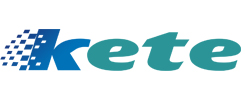

| The RF decryption- -What is the RF attenuator? |
| Date: 2022-12-06 View: 611 |
|
Author: Anton Patyuchenko, Director of Field Application Technology, ADI Question: What is an RF attenuator? How to choose the right rf attenuator for my app?
Answer: The attenuator is a control element, the main function is to reduce the signal intensity through the attenuator. Such elements are generally used to balance the signal level in the signal chain, extend the dynamic range of the system, provide impedance matching, and implement a variety of calibration techniques in the terminal application design.
Brief Introduction This article continues a series of previous essays to explain RF technology to non-RF engineers. IC attenuators will be discussed and provide some insights into their type, configuration and specification, designed to help engineers understand various IC products faster and select suitable products for terminal applications. Related articles in the series include: "Choosing the Right RF Amplifier Guide for Applications," "How to easily Choose the Right Frequency Generation Device," and "RF decryption Understand Wave Reflection."
Types of Attenuators From the critical function perspective, the attenuator can be divided into fixed attenuators, the former attenuation level remains unchanged, the latter attenuation level is adjustable. According to the attenuation control mode supported by the variable attenuator, it can also be further subdivided into voltage variable attenuator (VVA) and digital step attenuator (DSA), the former uses analog control technology, the latter uses digital control technology. The VVA continuously adjusts the attenuation level, which can be set to any value within a given range. Analog variable attenuators are often used for automatic gain control circuits, calibration, and other processing functions that require smooth and precise control of signals. The digital step-in attenuator uses a set of discrete attenuation levels that can adjust the signal intensity according to the pre-set attenuation steps. Digital control RFIC attenuator has a control interface compatible with microcontrollers and provides excellent solutions to maintain functional integrity in complex designs.
Design configuration The attenuator IC can be achieved using resistors, PIN diodes, FET, HEMT, and CMOS transistors, and achieved by the GaAs, GaN, SiC, or CMOS technologies. Figure 1 shows the three basic topologies constituting the various attenuator design configurations: Type T, Type π, and bridging Type T networks.
Figure 1. Basic attenuator topology: (a) T-type, (b) π -type, and (c) bridging the T-type network. Fixed-value attenuators utilize these core topologies realized by mixing thin films and thick films to provide fixed attenuation levels. The VVA generally uses a T-type or π -type configuration, with diodes or transistor elements operating in a nonlinear resistance zone. The desired level of the attenuation is adjusted by changing the control voltage, using the resistance characteristics of the basic element. The DSA usually employs multiple cascading units representing a single bit, which can be input or output to achieve the desired attenuation level. Figure 2 shows several examples of the configurations used in the DSA design. These include an integrated SPDT switch, switching input and output ports via attenuator and direct line; switch adjustment device design, using transistors or diodes as adjustable resistance; switch resistance configuration, resistance can be switched as input or output in the circuit; and a device embedded design, transistor or diodes are part of the design.
Figure 2. Example of D S A design configuration: (a) π type configuration, using integrated switch, (b) switch adjustment FET configuration, (c) switch resistance configuration, (d) FET embedded configuration. The attenuator topology can be used in designs of reflective or balanced types, with the schematic shown in Figure 3. Reflective devices use equivalent attenuators that are connected to the output of the 3dB orthogonal coupler and generally provide a wide dynamic range. The balanced configuration uses two 3dB orthogonal couplers to connect a pair of identical attenuators to provide excellent VSWR and power processing power.
Figure 3. (a) reflective and (b) balanced attenuator design topology. In addition to the main design configurations described herein this paper, the IC attenuator element can be implemented using the other types of circuits; however, these contents are not discussed.
Main Specifications To select suitable attenuators for terminal applications, engineers must gain insight into their main specifications. In addition to the attenuation function and some basic parameters (e. g. insertion and echo loss), there are many other features that can also be used to describe the attenuator element, mainly including: ● Frequency range (Hz): The frequency at which the IC maintains its specified characteristics ● Attenuation (dB): inhibition exceeding the insertion loss ● Frequency response: variation in attenuation level (dB) within the entire frequency range (Hz) ● Attenuation range (dB): the total attenuation value provided by this element ● Input linearity (dBm): Usually expressed by using the order 3 intersection adjustment point (IP3), the IP3 defines the assumption point of the input power level, where the power of the corresponding stray component will reach the same level as the base wave component ● Power processing (dBm): Usually represented using the input 1dB compression point, which defines the input power level when the insertion loss of the attenuator decreases by 1dB; the power processing characteristics are generally determined for the average and peak input power levels in steady-state and eager switching modes ● Relative phase (degree): Phase offset in the signal introduced by the attenuator element In addition to these commonly used parameters, switching properties are used to describe variable attenuators, often in ns for rise and descent, conduction and off times, and the amplitude and phase establishment time of the RF output signal. Moreover, each type of variable attenuator has its inherent properties. For VVA, they are related to their simulation control operations, including: ● Voltage control range (V): Adjust the voltage required for the attenuation level within the attenuation range ● The control characteristics are generally expressed by the attenuation slope (dB / V) and the performance curve, from which it can be seen that the attenuation level functions as a function of the control voltage For a DSA, its inherent features include: ● Attenuation accuracy (also known as state error) (dB): the change limit of the attenuation level relative to the nominal value ● Attenuation step length (dB): the amount of change between any two consecutive decay states ● Step error (dB): the change limit of the decay step length relative to the nominal value ● Overshoot and down (dB): transient signal during state transition (burr) Good attenuator elements typically require flat attenuation performance and excellent VSWR in the operating frequency range, provide sufficient accuracy and power processing capacity, and ensure smooth, unburr operation during the state transition (with only minor signal distortion), or provide linear control characteristics.
Conclusion The diversity of IC attenuator elements is certainly not limited to those discussed here, but other types of IC can be found, including frequency-based phase compensation attenuator, temperature-variable attenuator, programmable VVA with integrated DAC, etc. This paper has only introduces some common types of IC attenuators, mainly exploring the topology and key specifications to help RF designers select appropriate elements for terminal applications. KETE offers a series of coaxial RF components. KETE's coaxial attenuator offers a variety of size options, you can visit the link http://www.ketemicro.com/products3.html. Designers can flexibly choose the appropriate product according to the system requirements. These products are designed to deliver excellent performance and meet the requirements of various applications in the communications, military, and aviation markets.
|
Product Categories
RF Isolators
RF Circulators
Coaxial Fixed Attenuators
Coaxial Fixed Terminations
High Power RF Attenuators
Copyright © 2020 Kete Microwave Electronics Co.,Ltd. All Rights Reserved.
